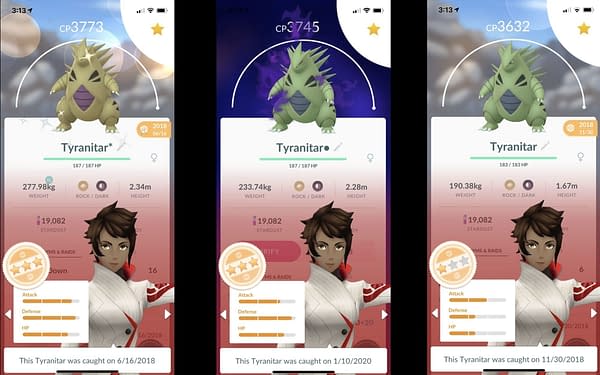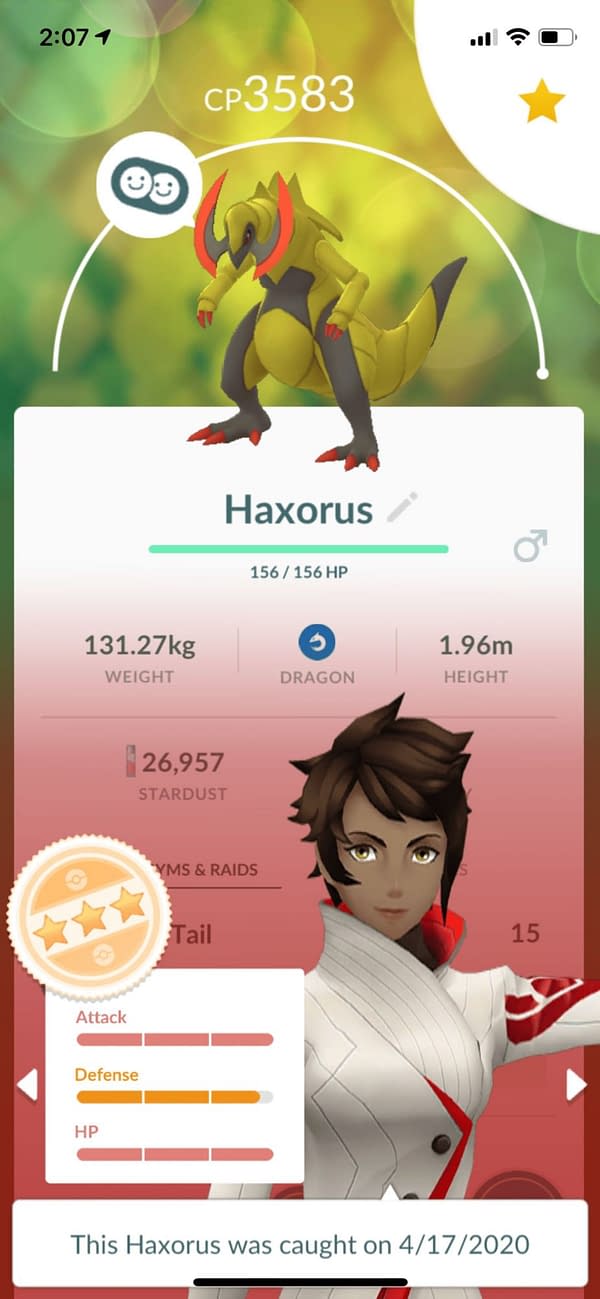Posted in: Games, Mobile Games, Niantic, Pokémon GO | Tagged: Niantic, Niantic Labs, pokemon, pokemon go, shiny pokemon
Understanding IVs In Pokémon GO: Rating Your Pokémon's Stats
If you're a Pokémon GO player wondering what others are talking about when they refer to Pokémon as "100 percents" or having "fifteen attack," then look no further. Bleeding Cool is here to help with this easy-to-understand guide that explains what a Pokémon's IVs are and how to read them, so you can make the best of your collection and see what makes up a Pokémon's stats.

IVs, or "individual values," are the stats that show up for a Pokémon when you click "Appraise." They rank, using three factors, the potential of the Pokémon. The three factors are Attack, Defense, and HP. Using these factors, the Pokémon's potential is rated either a one, two, three, or four-star Pokémon, with four stars meaning that it is a perfect Pokémon with the highest possible IVs in all three sections. This is what trainers are referring to when they call a Pokémon a "100 percent" or a "hundo."
A great way to understand IVs is to compare Pokémon of the same level, but different IVs. Above, there are three Tyranitar: a three-star Shiny, a three-star Shadow with a lower attack, and a one-star standard Tyranitar. All three of these Tyranitars are completely powered up, putting them at the same level. The highest IV Tyranitar pictured has reached 3773 CP, while the Shadow, which has slightly lower IVs, maxes out at 3745. Meanwhile, the one-star Tyranitar here has maxed at 3632, over 100 CP lower than the three-star. Conversely, a 100 percent Tyranitar would max out at 3834. This range demonstrates how much IVs can contribute to a Pokémon's CP.
Reading IVs is fairly simple, and is something that players can get used to by comparing Pokémon of different IVs. These stats are read in increments of five, with fifteen being the top. Three full bars after "Attack," for example, would mean that the Pokémon has "fifteen Attack," which is the highest that this stat can go. Every tick the bar has off of being filled is one point off. For example, the way that this Tyranitar would be classified is:
- Shiny Tyranitar at 3773 CP: 13 Attack, 14 Defense, 12 HP
- Shadow Tyranitar at 3745 CP: 11 Attack, 14 Defense, 12 HP
- Tyranitar at 3632 CP: 10 Attack, 7 Defense, 7 HP

Breaking it down further, this Haxorus pictured above shows that when a bar of the IVs is completely filled, it turns red. This Haxorus's stats would be read as: 15 Attack, 14 Defense, 15 HP. This is just off from being a perfect Pokémon (a 100 percent, in other words) so would be referred to as an approximately 98 percent Haxorus.
A common misconception is that a Pokémon with low IVs is useless. This is not the case. A Garchomp, for example, that has 0 Attack, 0 Defense, and 0 HP would still be able to hold its own against a perfect Pokémon of a weaker species. This is because Pokémon have base stats, which cannot be changed. The IVs simply add to the stats, allowing Pokémon to reach greater or lower heights when maxed out. A perfect Magikarp will always fall to the weakest possible Rayquaza.
While they can of course be helpful, IVs are not the end-all, be-all of Pokémon GO. IVs are something that can help trainers understand the potential of a Pokémon, but investing too much time into hunting for the perfect Pokémon can take the fun out of the game. If you'd like to see if you have any 100 percent Pokémon already, you can search 4* in your Pokémon storage and discover your own hundos.













